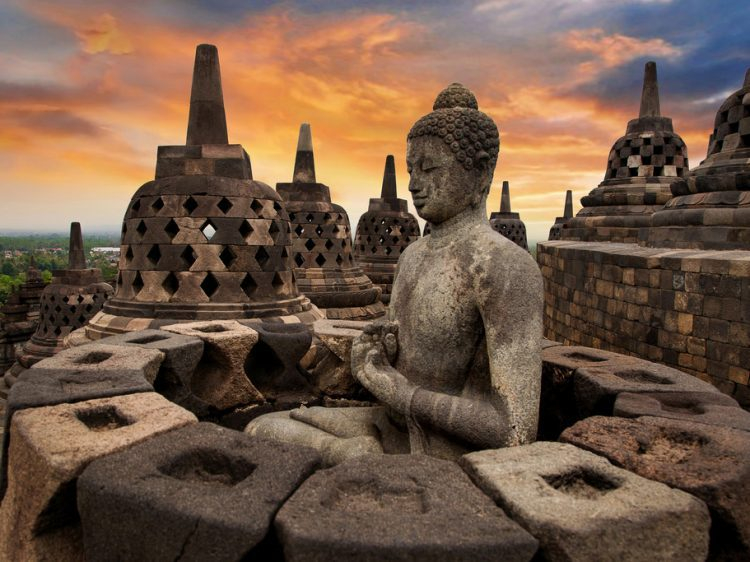Borobudur Temple
Borobudur is a 9th-century Mahayana Buddhist temple in Magelang Regency, Central Java, Indonesia, not far from the town of Muntilan. It is one of the most beautiful historical sites in Indonesia and is the biggest Buddhist temple in the world. The temple is made up of nine stacked platforms, six square and three round, with a central dome atop them. It has 2,672 relief panels and was formerly home to 504 Buddha sculptures. 72 Buddha sculptures, each seated inside a perforated stupa, encircle the center dome.
The temple was built during the rule of the Sailendra Dynasty in the 9th century, and its design is based on Javanese Buddhist architecture, which combines the Indonesian indigenous custom of ancestor worship with Buddhist philosophy. The temple displays India's influence on the region through Gupta art, yet there are enough local images and components included to make Borobudur truly Indonesian.
The Indonesian government and UNESCO collaborated on the greatest repair effort between 1975 and 1982, which was followed by the monument's designation as a UNESCO World Heritage Site. Borobudur is the world's biggest Buddhist temple, and it is one of Southeast Asia's great archeological monuments, alongside Bagan in Myanmar and Angkor Wat in Cambodia. Borobudur is still a famous pilgrimage site, with Buddhists in Indonesia commemorating Vesak Day there. Borobudur is Indonesia's most popular tourist destination.
Location: Kabupaten Magelang, Jawa Tengah, Indonesia











